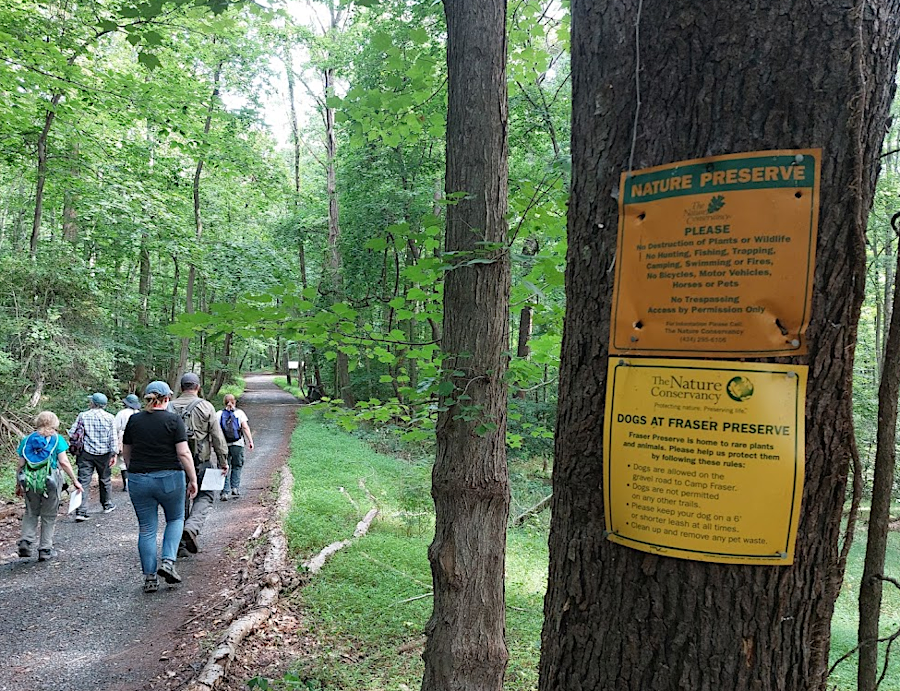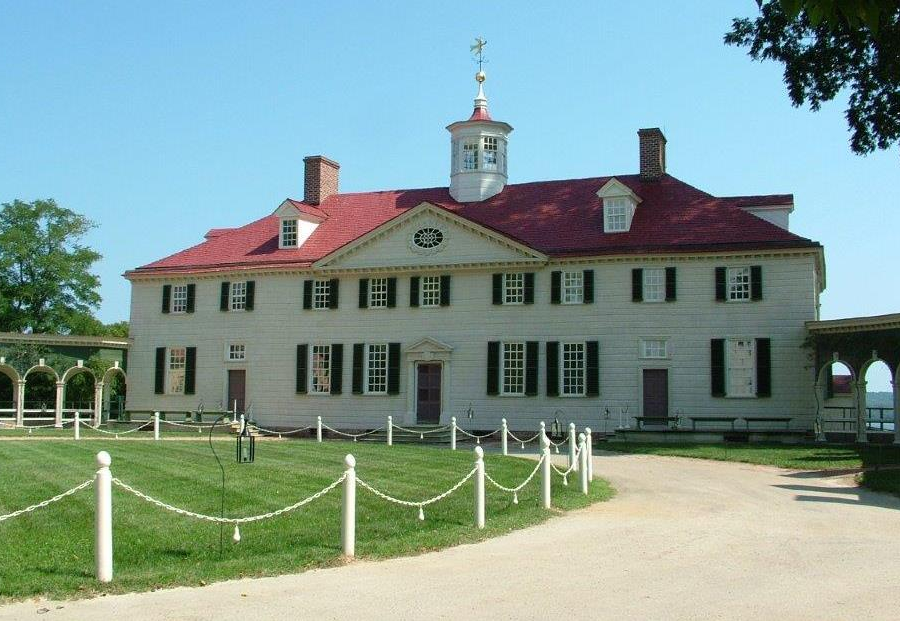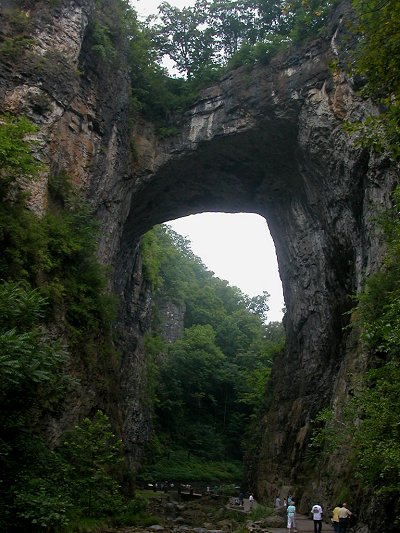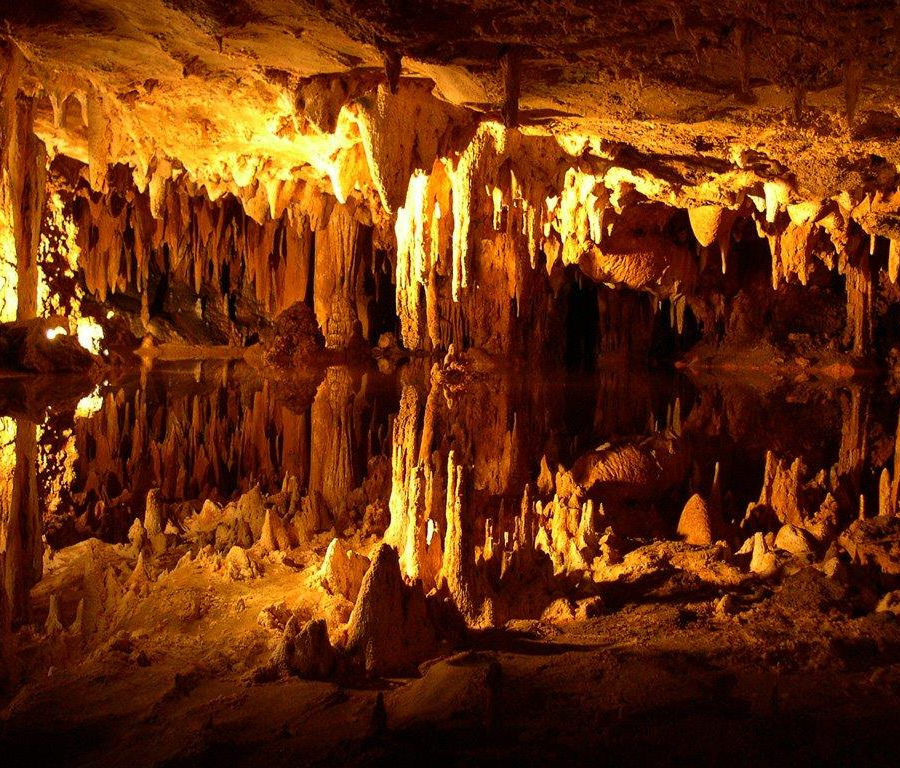
The Nature Conservancy allows public visitation at some of its privately-owned preserves
Source: The Nature Conservancy, Places We Protect

The Nature Conservancy allows public visitation at some of its privately-owned preserves
Source: The Nature Conservancy, Places We Protect
Only a few of the "special places" in Virginia are owned by Federal (or state/local government) agencies. Most of the state is in private land, with property titles that date back to the charter first issued by the king of England in 1606. Even portions of the bottom of the Jackson River is in private ownership, claimed through Kings Grants issued before the American Revolution.
Natural Bridge went into private ownership when Thomas Jefferson purchased it in 1774. It operated as a private tourist attraction, not part of a state or Federal park, until 2016. Proposals for the state to purchase the unique rock feature intensified when landowners put the entire property up for sale in 2007. A complicated land transaction led to the state beginning to operate Natural Bridge as a state park in 2016, even though the land remained in private ownership.
Luray Caverns is also private property. It was discoved by individuals who were seeking a cave in order to open a tourist attraction. The discoverers found what we now call Luray Caverns and bought the land from local owners They sold it in a sheriff's sale to settle an estate, and got a price as if it was just standard farmland. The heirs of the original owners had no idea what was underneath the surface.1
After the new buyers revealed the cave and the potential for profit became clear, the heirs of the original local landowners sued. They contended that the purchasers had defrauded them, by not revealing the presence of the cave they had discovered.
The basic rule in real estate law today is that property owners have to reveal information relevant to the site's condition, such as known (but not visible) chemical contamination at a site. However, the potential buyers have no obligation to reveal their plans for using the property.
Still, law is interpreted by juries. Over a century ago, after the buyers revealed the discovery of the extensive cave system, a local jury in Page County voided the sale of the farm and returned the property to the heirs of original local owners.
Throughout its history, private owners have managed Luray Caverns as a tourist attraction. Entrance fees and profits from stores at the attraction cover the costs of operation and make a profit (usually) for the owners - just like any business, such as Kings Dominion near Ashland, Busch Gardens near Williamsburg, or even the Potomac Mills shopping center near Dale City.

The Nature Conservancy owns Fraser Preserve in Fairfax County
Many of the old historic homes in Virginia are also in private ownership, including the homes of Virginia presidents. George Washington's Mount Vernon has never been owned by any government agency; the house has always been private property. The effort in the 1850's by the Mount Vernon Ladies' Association (a private, non-profit organization) to save Mount Vernon from decay is often cited as a turning point in historic preservation in the United States.
Monticello, the home of Thomas Jefferson, is also private. Montpelier (home of James Madison) is private property. None of the homes owned by other five Virginia presidents (James Monroe, William Henry Harrison, John Tyler, Zachary Taylor, Woodrow Wilson) are owned by the public. None are Federal, state, or even local parks.
Many old Virginia homes are owned by non-profit foundations that get favorable tax benefits under Federal and state law, but do not receive government funds for operations. Other places may be listed on the National Register of Historic Places but are, in many cases, still private properties with restricted or no public access. Do not assume you can visit a house listed on the National Register of Historic Places, if it's not owned by a Federal, state, or local government. The Federal listing honors the significance of a place, and limits the ability of the Federal government in particular to destroy a listed site for a new highway, but private property rights must still be respected.
The National Register of Historic Places is administered by the National Park Service. The person responsible for that historical database may have the best title in the Federal government - "Keeper" of the National Register of Historic Places.
In 2022, the General Assembly appropriated $4.75 million for the Shenandoah Valley Battlefields Foundation to develop seven Civil War battlefield parks - Second Winchester, Fisher’s Hill, Tom’s Brook, New Market, Cross Keys, Port Republic, and McDowell in Frederick, Shenandoah, Rockingham, and Highland counties. Together they totaled 1,731 acres. At the time of the one-time funding from the state, the Speaker of the House of the House of Delegats was Del. Todd Gilbert rpresenting Shenandoah County.
The US Congress had designated the Shenandoah Valley Battlefields National Historic District in 1996. Benefits of historic preservation were clear to some people, and the foundation managed to acquire 6,644 acres of historic properties. To increase public support and attract more funding, the Shenandoah Valley Battlefields Foundation created the Shenandoah Valley Tourism Infrastructure Plan to showcase tourism as an economic development initiative.2

the Shenandoah Valley Battlefields Foundation, rather than a state or Federal agency, acquired land for presrving Civil War battlefields in the Shenandoah Valley
Source: Shenandoah Valley Battlefields Foundation, The Shenandoah Valley Battlefields National Historic District
The exterior boundaries of Native American reservations are defined by property lines documented in county records. Two Native American reservations in Virginia, for the Pamunkey and Mattaponi tribes in King William County, have legal title to their land based on treaties signed by the colonial government in the 17th Century. The Monacan Tribe acquired legal title to their Bear Mountain property at the end of the 20th Century, so there is a standard deed in the courthouse of Amherst County for ownership of that property.

Mount Vernon, home of President Washington, is owned by a private organization (the Mount Vernon Ladies' Association) and not by a government agency
Source: US State Department, ShareAmerica

Natural Bridge was privately owned until 2016, when it began to transition into a Virginia State Park

the spectacular and complicated stone formations at Luray Caverns draw tourists to the privately-owned tourist attraction
Source: US State Department, ShareAmerica